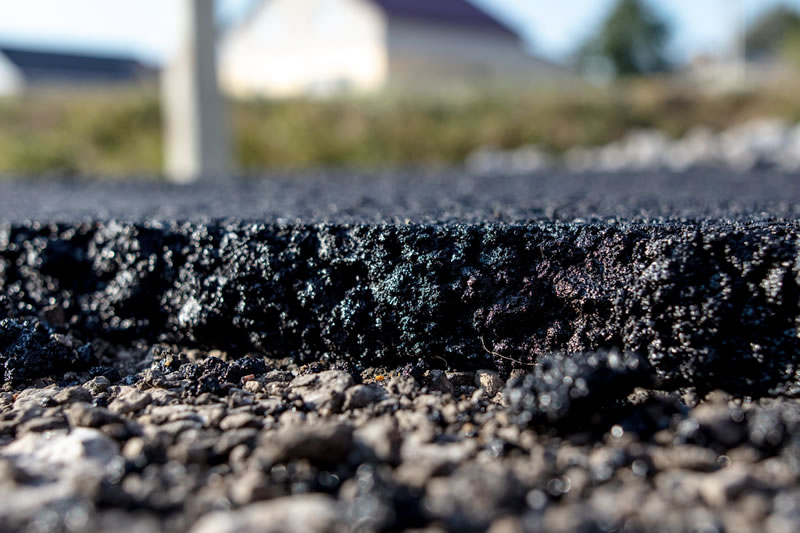Bitumen, a crucial component in road construction and various industrial applications, possesses distinct properties that determine its safety and performance characteristics. Among these properties, the flash point and fire point of bitumen play a pivotal role. In this article, we delve into the significance of flash and fire points, their differences, and their impact on construction and safety measures.
Read More: Bitumen
Introduction
Bitumen, often referred to as asphalt, is a highly viscous, black or dark-colored substance derived from crude oil during the refining process. It finds widespread use in road construction, roofing, waterproofing, and various industrial applications due to its adhesive and waterproofing properties.
What is Bitumen?
Bitumen is a complex mixture of hydrocarbons, consisting mainly of polycyclic aromatic compounds. Its composition varies based on its source and the refining process it undergoes. It can range from highly viscous to semi-solid in consistency and is categorized into different grades based on properties like viscosity and penetration.
Flash Point: Unveiling the Concept
The flash point of bitumen is the lowest temperature at which it releases enough vapor to form an ignitable mixture with air, without the need for an external ignition source. It’s a critical parameter as it indicates the temperature at which bitumen can produce flammable vapors, making it susceptible to ignition.
 Fire Point: Going Beyond Flash Point
Fire Point: Going Beyond Flash Point
The fire point of bitumen is the temperature at which it continues to release vapors and sustains combustion when ignited. Unlike the flash point, the fire point involves the presence of an external ignition source. It signifies the temperature at which bitumen transforms from merely releasing vapors to sustaining a continuous flame.
Read More: Dirilling Barite
Key Differences between Flash and Fire Points
While both flash and fire points deal with the ignitability of bitumen, their key difference lies in the presence of an ignition source. Flash point is the temperature at which bitumen can produce ignitable vapors without an external source, whereas the fire point involves sustained combustion due to an external ignition source.
Measuring Flash and Fire Points
Flash and fire points are typically measured using specialized apparatus, such as a Pensky-Martens closed-cup tester or an open-cup tester. These instruments involve gradually heating a bitumen sample in a controlled environment until it releases vapors that can be ignited. The temperature at which ignition occurs is recorded as the respective point.
Factors Affecting Flash and Fire Points
Several factors influence the flash and fire points of bitumen. These include the bitumen’s composition, source, additives, and impurities. Higher concentrations of lighter hydrocarbons tend to lower both points, while impurities can have a similar effect. Conversely, higher molecular weight compounds can elevate these points.
Read More: Wikipedia
Importance in Industrial Applications
The flash and fire points of bitumen are crucial considerations in industrial applications, especially those involving high temperatures and potential ignition sources. Industries such as roofing, waterproofing, and pavement manufacturing must account for these points to ensure the safety of their processes and products.
Ensuring Safety in Storage and Transportation
Bitumen is often transported and stored in bulk, making its flash and fire points pivotal for safety protocols. Understanding these points helps formulate proper handling, storage, and transportation procedures to prevent accidents and fire hazards.
Significance in Road Construction
In road construction, bitumen serves as a binding agent for aggregates in asphalt mixtures. Understanding the flash and fire points is essential to ensure that the bitumen used in pavements can withstand the high temperatures experienced during construction and usage, without posing a fire risk.
Regulatory Standards and Guidelines
Regulatory bodies and standards organizations set guidelines for the handling, transportation, and storage of bitumen due to its flammable nature. Adhering to these standards is crucial to prevent accidents, protect workers, and safeguard the environment.
Read More: Silica
Enhancing Bitumen Properties for Safety and Performance
Researchers and manufacturers continually work to enhance bitumen properties, including its flash and fire points. This involves refining the composition, exploring additives, and optimizing production processes to create bitumen with improved safety and performance characteristics.


 Fire Point: Going Beyond Flash Point
Fire Point: Going Beyond Flash Point





